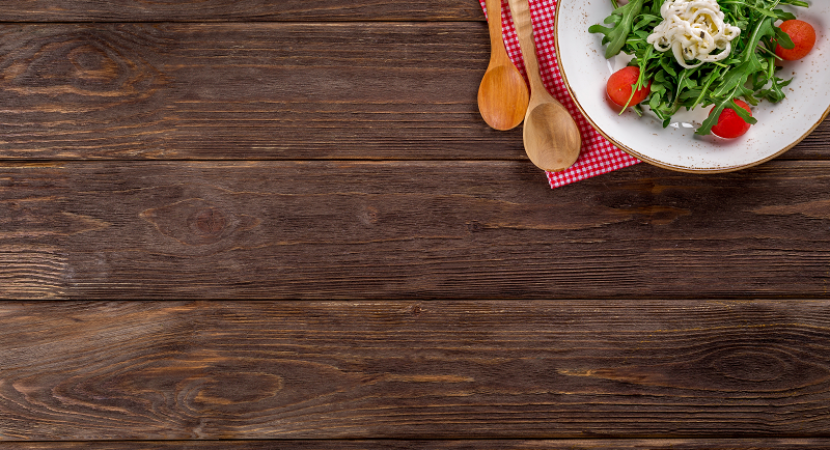Vibrant colors, suave editing, and a kitchen setup that is perhaps the envy of most everyone who’s watching – that’s what a cooking video on your social feed looks like. If you’ve ever wondered how chefs or even amateur cooks pull this off, you’re in the right place.
Many recipe videos like these seem to make it on the trending list on platforms such as YouTube, Facebook, and even Instagram without a hitch. Not only are these creators and editors able to pursue their passion for cooking, but they’re also able to receive tons of views and engagement in the bargain.
This article will endeavor to list out and explain everything you would need to make that amazing, viral cooking video and put it out there for the world to see.
Use visually appealing ingredients
To keep your viewers engaged and interested in your video, you’ve got to make sure that your ingredients are worth ogling at. Recipe videos involving soups, stews, and some kinds of meat won’t necessarily have the visual appeal your audience is looking for.
You can instead focus on making cooking videos involving cheese, cocktails, fried food with various sauces, bright-colored desserts, and basically anything that looks remotely gooey or chocolaty.
Pick a simple recipe
If you want your viewers to be interested enough to watch through the complete recipe and subsequently end up on your landing page (from your social media channel), keep your video simple and short.
Ensure that the steps involved are easy to follow, and the video itself is visually engaging.
A cheerful, orderly kitchen table or workspace
A disorganized kitchen table with clutter lying around is the most distracting thing for a viewer. It might even put them off from watching the rest of your video. Creating a prim and tidy workspace, therefore, is crucial to the success of your content.
Moreover, this sort of environment heightens the instructional value of your video as well.
Utilize tools that are camera-worthy
Everything you use on your video, be it your cooking utensils and appliances or elements you employ for the purpose of decoration, must appear bright, immaculate, and clean.
Because if your tools translate into dull-looking objects on the screen, you can no longer bank on the visual appeal of your video.
You don’t have to invest a lot on your camera
Contrary to popular belief, you don’t need to invest in sophisticated camera equipment that might burn a hole in your pocket. You can stick to using your smartphone camera or invest in a standard DSLR to get things started.
You could choose to use just one camera if you want a view from a single angle. It could be an aerial view or a side view. Or, if you want more variety, use your smartphone camera for an aerial view and the DSLR to give the audience a side view of your setup.
Invest in a tripod
In order to ensure that your movements aren’t disrupting the quality of your video, you need to get a decent-enough tripod.
Many recipe videos have a bird’s eye view or aerial view of all the action, and if you want the same quality to translate into your videos, getting a tripod with a reversible center post could be your best bet.
You could also purchase a tripod arm attachment if you want to focus on showing a closer view of your workspace.
You’ve got to get the lighting right
To make your videos Insta-worthy and enticing enough for your viewers, you don’t exactly need fancy, high-end lighting equipment. Ensuring that your light source matches in color are all that you need to begin.
If you’re using a natural light source, bear in mind that your videos will have a bluish hue to them. On the other hand, if you prefer to use indoor lighting, your videos will have a warm, yellowish tone to it. Stick to one tone to get neat, clear-cut colors at the time of production.
For indoor lighting options, purchasing LED lights or CFL bulbs should work best. You can also go the cheap route by purchasing Chinese paper lanterns.
It’s all about the post-production
Once you’re all set with the pre-production aspect of your video, your next step would be to ensure that your video is edited and published in a smooth manner.
YouTube is a great place to start uploading your videos, even if you decide to upload your content on other social media channels later on.
Aside from your video containing an introduction that is short, snappy, interesting, and to the point, it should also show your audience that you are dedicated to your craft. Showcasing your brand logo with a couple of fun clips and a background music score that is cheerful should be an entertaining way to get things rolling.
If you’ve made enough of an impression throughout the length of your video, your viewers might choose to stay till the end of it. This is the perfect time for you to insert your outro that would involve either a download, a registration, or a sign-up.
As such, it is essential that you use a simple outro maker for your Call To Action (CTA) and get the users to hit the subscribe button or visit your website. Many outro makers have the option of inserting clickable annotations that will take them to your website or social media channels.
For a seamless video editing experience, on the whole, you can use a smooth and uncomplicated online video maker that allows you to easily trim, edit, add transitions and effects without a fuss.
Wrapping Up
There’s no doubt that creating recipe videos is hard work. As illustrated in this article, you have to take several things into account before getting started. But this doesn’t mean that you have a lot to gain by beginning such a venture.
Making recipe videos that have all chances of going viral over social media should be enough of an inducement for novices. This is because cooking videos are fundamentally engaging, interesting, and interactive by themselves, and this could be your opportunity to add to the genre.



Reply